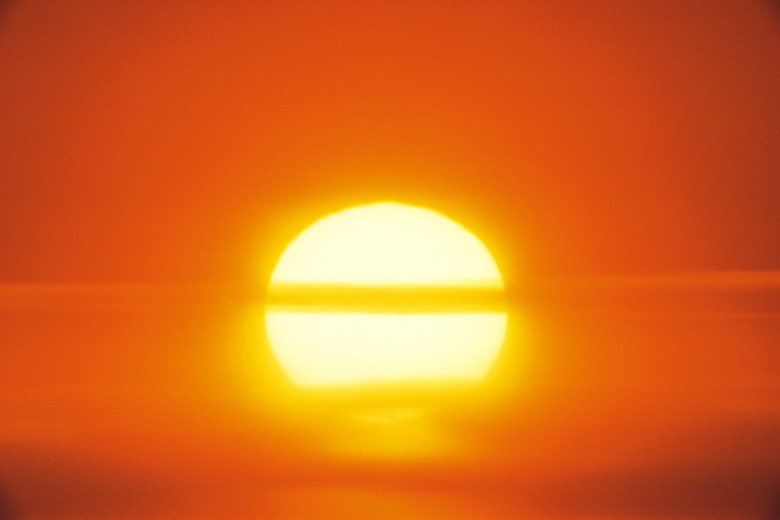Does Distance Affect The Solar Radiation The Planet Receives?
The amount of solar radiation the Earth receives is very closely related to its distance from the sun. And although the sun's output has varied over it's long lifetime, Earth's distance from the sun and orbital characteristics have the greatest effect on the amount of radiation our planet receives. But not all sunlight is absorbed by the Earth. Some is reflected back into space instead of being converted to heat.
Inverse Square Law
Inverse Square Law
The inverse square law is a fundamental concept in physics that applies to many phenomena including gravity, electrostatics and the propagation of light. The law states that a given quantity or intensity is inversely proportional to the square of the distance from the source. For example, the intensity of solar radiation on the surface of Mercury is nearly nine times that of Earth's, but Mercury is only around three times closer to the Sun. Tripling the distance to the sun decreases the amount of radiation reaching Earth's surface to one-ninth the light level on Mercury.
Orbital Variations
Orbital Variations
According to Kepler's first law of planetary motion, the law of orbits, Earth moves in an elliptical path around the sun. The distance between Earth and sun varies slightly throughout the year. At aphelion, the farthest distance from the sun, Earth is 152 million km away. But at perihelion, the closest distance from the sun, the Earth is 147 million km away. As a result, throughout the year, the amount of light reaching Earth's surface changes by a few percent.
Solar Radiation
Solar Radiation
Through the years, scientists have directly monitored solar radiation by using instruments and satellites like the Total Irradiance Monitor, part of the SORCE satellite mission. Studies show that solar output varies minute to minute and changes drastically over thousands of years. These variations can influence changes in Earth's climate. Sunspots are also related to solar output, although it's not understood how. Historical records of sunspot activity indicate that solar output is higher whenever there are more sunspots.
Planetary Albedo
Planetary Albedo
Scientists can calculate the amount of solar output Earth receives at a given distance from the sun. Earth reflects some of this light into space, reducing the total radiation absorbed. This effect is described by the term albedo, which is a measure of the average amount of light reflected by an object.
Albedo is measured on a scale from zero to one. An object with an albedo of one would reflect all light reaching it, while at zero albedo, all light would be absorbed. Earth's albedo is about 0.39, but changes over time such as cloud cover, ice caps or other surface features change this value.
Cite This Article
MLA
Simmons, Marty. "Does Distance Affect The Solar Radiation The Planet Receives?" sciencing.com, https://www.sciencing.com/distance-affect-solar-radiation-planet-receives-2341/. 24 April 2017.
APA
Simmons, Marty. (2017, April 24). Does Distance Affect The Solar Radiation The Planet Receives?. sciencing.com. Retrieved from https://www.sciencing.com/distance-affect-solar-radiation-planet-receives-2341/
Chicago
Simmons, Marty. Does Distance Affect The Solar Radiation The Planet Receives? last modified March 24, 2022. https://www.sciencing.com/distance-affect-solar-radiation-planet-receives-2341/
